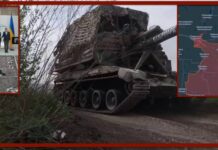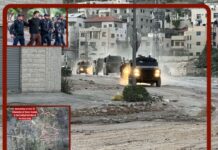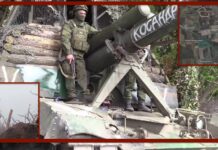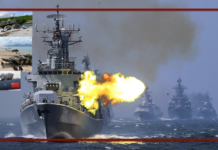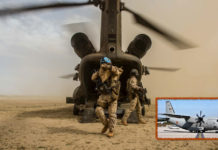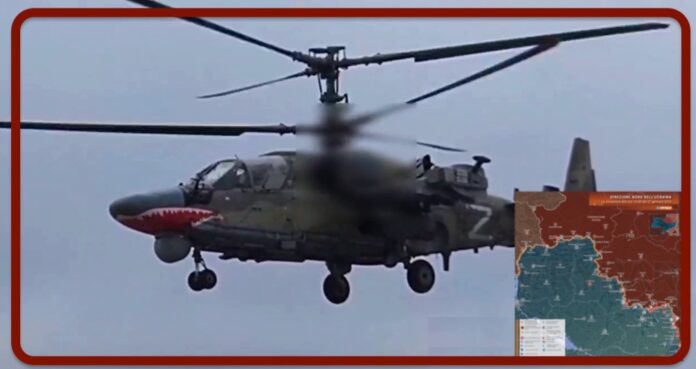
The Russian special operation does not change its status but may have changed some rules of engagement. On 25 January, the State Duma approved in its first reading a draft law supplementing the list of operations in which the military can participate by conducting anti-terrorist and other operations outside Russia.
Conscripts who wish to enlist to serve in counterterrorist and other operations outside Russia, including the suppression of international terrorist activities, may be enlisted for up to one year no earlier than one month before the end of their military service.
It is also envisaged that a similar contract may be concluded with a citizen who is in the reserve and wishes to enlist for military service to participate in such operations. For contracted military personnel participating in such operations outside the Russian Federation, it is proposed to establish a probationary period of three months.
This is also in response to the sending of more sophisticated and new, albeit dated, weapons to the Ukrainian Army. Also on 25 January, Konstantin Gavrilov, head of the Russian delegation to the OSCE stated: ‘Moscow will consider the use of uranium bullets for the Leopard 2 tanks as the use of dirty nuclear bombs’. He added: ‘We know that the Leopard 2 tank, as well as the Bradley and Marder BMPs, are armed with sub-calibre perforating projectiles with uranium core, the use of which leads to contamination of the area, as happened in Yugoslavia and Iraq. If such projectiles are supplied to Kiev, we will consider it as the use of dirty nuclear bombs against Russia, with all the appropriate consequences’.
Still on the subject of military doctrine, despite the tactical successes of the Wagner, paratroopers, marines, and motorised riflemen in the Donbass and in the direction of Zaporizhzhia, thanks in part to the use of a new type of Iranian weapon, apparently a condition of the agreement to hand over Su-35s to Iran, the Russians are preparing for the escalation of the war and are observing changes within the Ukrainian Armed Forces. Indeed, social sources report that: “In central Ukraine, large formations are being created involving Western military forces – at least 3 army corps. In addition to the army corps, separate specialised brigades are being formed’.
Also of concern is the systemic increase of, ‘the percentage of Western weapons and armoured equipment using optoelectronic systems for reconnaissance, target acquisition and modern on-board computer systems with network-centred decision-making systems’.
According to the Russians, moreover: ‘To slow down the advance of Russian forces in the Donbass, TERO units (Ukrainian militiamen and regional battalions) are being used as living battering rams and so-called “cannon fodder”. The Ukrainian trained reserves are in coalition and in limited rotation’.
The artillery units of the Russian Armed Forces in the border area are subject to firing limits of several dozen rounds per day for the batteries. And alongside this: ‘Ukrainian units have been saturated with fpv drones capable of engaging tanks and large armoured vehicles, as well as effectively penetrating the EMP system in place of Chinese ‘Mavic’ civilians’. Many drones came from Poland.
Also according to the Russian social sphere: ‘Under the cover of high-profile intelligence events, daily landings of the Ukrainian Armed Forces in the direction of Kherson, in the insular parts of the territory south of Kherson, are recorded’. Basically, therefore, the Ukrainian Armed Forces are trying to create a favourable operational environment for the implementation of a large-scale counteroffensive plan in the east already in the spring and summer of this year. It will have to be seen what the Russian generals will field.
Much less of a military concern is the arrival of tanks. ‘NATO tanks are poorly suited to the typical Ukrainian battlefields,’ Viktor Murakhovsky, editor of the magazine Arsenal of the Fatherland, told RIA Novosti. Murakhovsky continued, ‘Research shows that in Ukraine 55% of the territory is closed terrain with a line of sight of less than 500 metres. The armour of NATO tanks is ‘calibrated’ for a range of over 2,000 metres. At close range they will be safely penetrated by the shells of the 2A46 tank guns and the Soviet Rapira guns,’ the expert said. According to Murakhovsky, ‘the large size of the Abrams and Leopards also lends itself to the use of RPG-7 rocket launchers’. As was seen in Syria and Iraq when Daesh destroyed the Abrams with RPGs built in Mosul. “At the same time,” the military expert concluded, “all these vehicles have considerable firepower, as well as modern electronics, which requires the anti-tankers to choose their position more carefully”.
And now a look at the front line recorded at 13.00 hrs on 27 January in the direction of Vuhledar. Marines of the 155th Pacific Fleet Brigade and OBTF fighters continue to carry out house-to-house raids in the dacha areas, i.e. residential areas, south-east of Vuhledar. Ukrainian commanders moved reserves to hold the dachas.
Assault groups of the Ukrainian 72nd Brigade now operate from the eastern outskirts of Vuhledar and the Yuzhno-Donbaska mine. The advance deep into the town is currently not promising due to the dense inner defences (at least three companies per 1 km).
According to some reports, the Ukrainian Armed Forces started to transfer reinforcements from the direction of Soledar. A tactical battalion of an unidentified formation arrived in Bogatyr, while in Berezove, mobilised men are being prepared to be sent to the Vuhledar area.
Artillery and tanks of the Russian Armed Forces are massively shelling the southern outskirts of Vuhledar. Ukrainian formations are using anti-tank complexes, MLRS and mortars to hit Russian positions near Nikolskie Dacha.
Graziella Giangiulio


